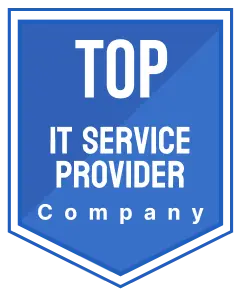Starting a new software development project for your business is truly a very thrilling adventure. It's literally a chance to build something that can actually change the way you work, boost your productivity, and eventually grow your company. However, many businesses, especially new ones or those without a typical tech background, make mistakes that can literally cost them millions in the long run. These mistakes actually could slow down your progress, lead to more unexpected costs, and even truly ruin your chances of success.
In this article, we're going to take a look at five very common software development mistakes that could cost your business a lot of money. The real aim here is to make sure you avoid them so that you develop software that works well for your business, saves you money, and helps you grow.
1. Skipping Proper Planning and Research
Probably one of the most important mistakes in software development is spending less time on planning. This step needs to be taken prior to actually going into the development stage so that one would be clear on the requirements and what the software would do for your business.
Why does it matter?
In most cases, failure to plan ends up producing a product that does not help you realize your business goals. You might reach the middle of development and discover that the software needs more features or it simply doesn't work as you anticipated. This can lead to further delays, higher costs, and perhaps even redoing the entire project.
What should be done instead?
First of all, let's start with clearly stated goals. You should just ask yourself, "What is it that I really want this software to achieve?" "How does it actually help my business?" Try to do more good research about it, speak with your team about their actual needs, and also get ready to make changes if need be. The more planning you do, the fewer problems you are likely to experience while in development.
2. Underestimating the importance of UX
You may be concentrating on features and functionality, but forget that the software has to be easy for your team or customers to use. If it's literally too complicated, they won't want to use it, and the software won't be effective.
Why does it matter?
A bad user experience will result in frustration, wasted time, and lower productivity. If your employees or customers cannot figure out how to use the software, they either give up or use it inefficiently. It leads to a drop in engagement, which simply means that money spent developing the software is gone.
What should you do instead?
Invest in user testing and feedback across the development phase. Your team should be drawn in early for the design of and testing with the software that you will assure is simple, intuitive, and easy to use. Don't be afraid to make some changes based on feedback, perhaps even adjusting designs or adding something you hadn't planned on before; after all, a smooth user experience guarantees success.
3. Failure to Set Realistic Timelines and Budgets
It is often tempting to try to rush the software development process when you are all excited to get your new tool or system up and running. However, this can quickly backfire on you and cost far more than what you had originally planned.
Why does it matter?
If you do not set realistic expectations, you may end up cutting corners, and that may result in poor-quality software or even missed deadlines. Furthermore, if your project goes over budget or takes too long, your business may suffer from severe financial strain.
What to do instead?
Be truly realistic about how long it will actually take to develop your software and how much money it will cost. Plan for all the delays that will surely arise, so have a buffer in your budget for those unexpected problems. Regularly track your all your progress and also try to adjust according to needs. Well-defined and achievable goals will literally help you stay on course and actually save on extra costs.
4. Failure to Scale
The more you grow, the more demand on the software. If you're not considering design and growth, then you're going to eventually have a lot of problems coming down the road.
Why is this important?
You quickly find yourself bogged down by slow load times, crashes, or limited functionality if your software can't grow with your business. Or worse, in extreme cases, you may even have to completely rebuild your software, which is really costly. Avoiding the future planning of scalability means more headaches, delays, and lost revenue.
What to do instead?
Ensure that your software is scalable from the very beginning. Think about how it will have to actually handle bigger volumes of data, more users, and a lot more extra features as your business grows. That doesn't actually mean that you should just try to build the perfect system for the future from day one, but you should at least plan ahead and make sure that the software is flexible enough to accommodate future growth. If you are unsure, you can ask your development team for advice on how to design for scalability.
5. Failure to truly maintain and update on an ongoing basis
Software development actually does not stop once the software is always up and running all the time. On-going maintenance and updates are truly very important to literally ensure that your software is secure, very efficient, and more compatible with other systems.
Why does it actually matter?
Many businesses assume that once their software is launched, they are done. However, these bugs and issues can truly arise over time, and security vulnerabilities can actually put your business at risk. Without regular updates, your software may become outdated or incompatible with other tools you use.
What to do instead?
Plan for regular maintenance and updates from the beginning. That is, you have to budget for the improvement cost, bug fixes, and security updates. There has also to be a team to monitor your software, handle any issues that may crop up, and ensure everything runs smoothly. Maintaining a check on matters from this very beginning will help avoid big-time problems in the future.
Conclusion
Building software for your business could be literally a real game-changer, but with these costly mistakes, it won't be. Take some time to actually properly plan, have a focus on user experience, set realistic expectations, scalability, and how you will ensure ongoing maintenance and save your business millions in the long run by creating software that works for you.
Remember, the right software can help your business grow, but it takes effort to build it properly. Learn from these mistakes, and you’ll be much more likely to succeed. Stay ahead, make smart decisions, and watch your business thrive!

_thumb.webp)
_thumb.webp)
_thumb.webp)

_thumb.webp)













